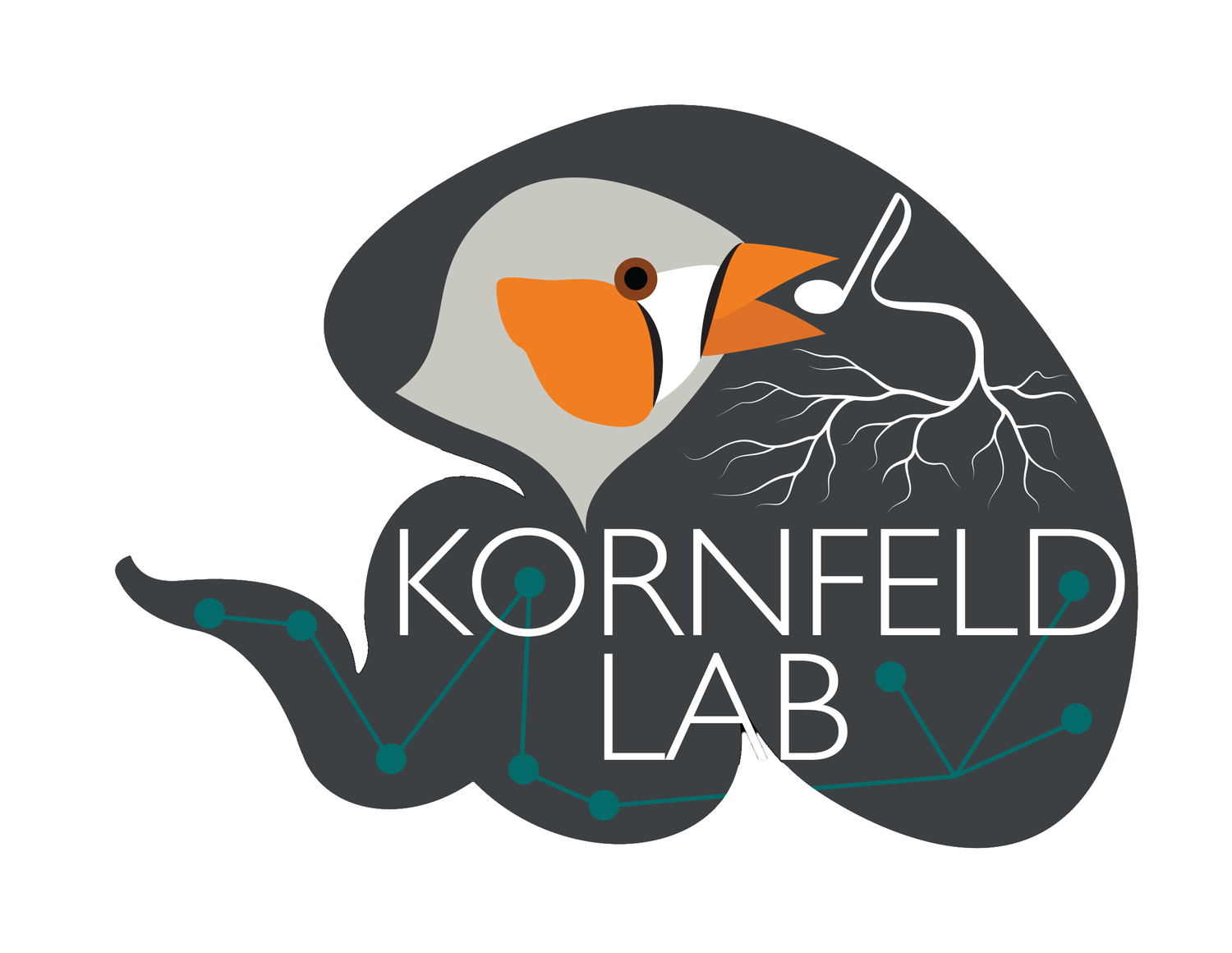
Connectomics
of learned behaviour
How do animals store learned behaviours in their neuronal networks and retrieve them when performing those behaviours? It is widely believed that the connections between neurons, or synapses, are the memory substrate. The sum total of all these synaptic connections is called the connectome. We aim at reading the first complex memory from a vertebrate brain to deepen our understanding of how neural circuits encode, store, and retrieve information at the level of synaptic connectivity.
Illustrations by Julia Kuhl
Using the zebra finch songbird as a model, we investigate how song memories are stored and retrieved from underlying brain circuits. These birds can perform songs as an adult that they have practiced as a juvenile, not unlike how humans learn language.
To map these brain circuits at sufficient resolution to see synapses, we employ high-throughput 3D electron microscopy. Vast amounts of image data result from this process, far more data than a human being could ever look through manually. Thus, to analyse the data, we employ state-of-the-art deep learning techniques to infer the connectomic map, and let the artificial neural networks reconstruct the real ones.
"These birds learn songs not unlike how humans learn language."
Through the use of this machine learning, we hope to obtain a better understanding of how the brain stores and retrieves memories (connectome decoding, memory decoding), and are trying to understand how imitation learning works.
“ The brain is a world consisting of a number of unexplored continents and great stretches of unknown territory. ”
Santiago Ramón y Cajal
Our long-term goal is to mechanistically understand how a learned behaviour (the zebra finch song) is encoded in the underlying synaptic wiring patterns, and create a link between the specific behaviour of an individual and the connectome it is based on.
Want to explore more?

